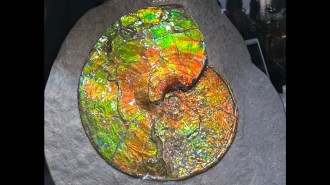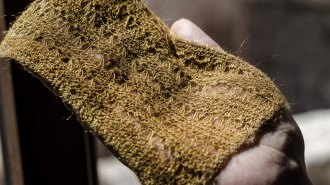Carbon nanotubes get nosy
- More than 2 years ago
They won’t fetch the newspaper, but carbon-nanotube sensors might someday sniff out explosives with the same skill as our canine companions. Researchers have demonstrated that individual nanotubes, decorated with DNA, can rapidly detect several gases.
Carbon nanotubes make good sensors because their single layer of carbon atoms is available to interact with other molecules. When gas molecules come in contact with the nanotube, they can pick up or donate electrons, which changes the charge on the nanotube. This, in turn, changes the amount of current that a nanotube can carry.
But not all gases will interact with carbon, says A.T. Charlie Johnson, a physicist at the University of Pennsylvania in Philadelphia. So, he and his colleagues adorned some nanotubes with a layer of single-stranded DNA, which binds to more kinds of molecules than naked carbon does. The captured molecules can then interact with the nanotube.
The modified tubes detected five gases, two of which bare tubes can’t sense: the explosive dinitrotoluene and a derivative of the poison sarin. The sensors, described in the September Nano Letters, picked up the scents in less than 10 seconds. Once a gas was removed, the sensors returned to their baseline current within 30 seconds.
The team is now working to identify enough DNA sequences to create “a library of different strands that are sensitive to different odors,” Johnson says. Eventually, he notes, it may be possible to create an “electronic nose” by arraying a plethora of DNA-tailored carbon nanotubes on a microchip—an approximation of sensory cells in an animal’s nose.







